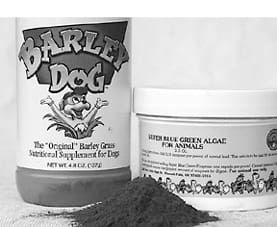Fires, tornadoes, hurricanes, floods, earthquakes, explosions, train wrecks, and other disasters change lives in an instant. The toxic fallout continues to affect us – and our family pets – long after the property damage caused by the disasters has been repaired.
Of course, the people who experience these disasters will seek and receive medical care. But what about their pets, especially dogs, who most likely accompanied their guardians throughout the ordeal?
For example, dogs exposed to forest fires and burning buildings inhale smoke, asbestos, and other toxins. Whenever an accident involves a manufacturing plant, tank truck, or train carrying toxic chemicals, dogs face the same risks as humans exposed to the spills or fumes. In the most dramatic example, when the World Trade Center collapsed on September 11, a cloud of smoke, dust, ash, pulverized concrete, asbestos, jet fuel, fiberglass, microscopic shards of broken glass, and toxic chemicals blanketed lower Manhattan. In the days and weeks that followed, thousands of resident dogs and hundreds of search and rescue dogs walked through the debris and breathed its vapors.

Less dramatic, but still harmful, is the exposure that dogs receive in neighborhoods treated by lawn care companies or insect control programs. Canine residents and passers-by absorb pesticides through their paw pads, noses, mouths, and lungs.
What can concerned dog lovers do to help keep yesterday’s toxic exposure from becoming tomorrow’s health problem? Plenty, say the experts.
Wash the dog
Of course, if you are aware your dog has been exposed to toxic smoke, dust, or chemicals, the first thing you want to do (after taking care of yourself and the rest of your human family) is to wash him as thoroughly as possible. Consult a poison control center or veterinarian regarding exposure to unfamiliar chemicals in the aftermath of a disaster such as a train derailment or overturned truck. But whether or not you are familiar with the chemicals that your dog was exposed to, wear rubber gloves when bathing him.
Don’t forget to wash your dog’s collar, leash, and any bedding that he may have come in contact with prior to the bath. Use a simple soap or shampoo – no insecticidal shampoos – and rinse especially well; poison control centers suggest that people rinse themselves for at least 15 minutes after skin exposure to chemicals. Don’t neglect the dog’s feet, which should be scrubbed well. Search and Rescue dogs working at the World Trade Center were bathed daily, and so should any dog exposed to smoke or dust.
Consult a holistic veterinarian
While many conditions respond well to home care, be ready to consult a veterinarian if your dog shows symptoms that might result from smoke inhalation, exposure to chemicals, or other hazards, including vomiting, coughing, weight loss, a loss of appetite, behavior changes, or limping.
Flushing the system
An adequate supply of clean, fresh water is always important for your dog’s health. But it’s absolutely critical for dogs who have to flush toxins from their bodies. “Because it hydrates the body and flushes toxins from the system, water should be given to any dog recovering from a disaster,” says Stephen R. Blake, DVM, of San Diego, California. Dr. Blake recommends that carbon-filtered or spring water be available to the dog at all times; tap water may contain impurities.
In fact, everything in the dog’s diet and environment should be free from toxins and pollutants, says Dr. Blake. “This is not the time to introduce any new chemicals or prescription drugs, including systemic treatments for flea and tick prevention or routine vaccinations. The body has to work hard to get rid of the toxins it has already absorbed; it doesn’t need any new ones.”
Pro-protein
What you feed your dog following toxic exposures can also make a difference in his speedy recovery. “The body needs easily assimilated protein, with all its amino acids and peptides, in order to repair and rebuild damaged tissue,” says Beverly Cappel, DVM, of Chestnut Ridge, New York. “This means feeding the highest quality protein, preferably organically raised, pasture-fed beef, lamb, chicken, and other meats.” She also recommends adding vitamin C, antioxidants, and food-source vitamins and minerals for optimum healing.
Dr. Cappel is an advocate of raw-food diets, and most of her clients already feed their dogs home-prepared diets that include raw meat. If a dog on such a diet has been exposured to toxins, she recommends that the owner strive to make sure the food the dog eats is as chemical-free as possible. If a dog eats commercial food, the owner should try to improve the quality of the food, but Dr. Cappel would not recommend starting the dog on a raw diet at that time. “If a person is feeding kibble, it should be the best quality kibble available. But you wouldn’t want to begin a raw diet, healthful as it may be, when the dog is stressed.”

Dr. Blake also recommends increasing the protein intake of dogs exposed to hazardous conditions by adding two ounces of fresh meat, eggs, cheese, or cottage cheese to each six ounces of whatever the dog is already eating. “If the dog is on a commercial food,” he says, “this is a good time to upgrade to a brand with a higher proportion of protein, which should be from whole meats rather than byproducts.”
Predigested protein improves canine health, for it is easily assimilated and quickly heals damaged tissue. The supplement Seacure, made from fermented deep-sea fish, is 85 percent protein. Most dogs love its strong fishy odor. The recommended human dose of six capsules twice a day can be adapted to any dog’s size, but for serious repair work, the body can utilize twice or four times the maintenance dose. After injuries heal, the maintenance dose continues to improve digestion and support detoxification.
Goat milk molecules are smaller than those of cow’s milk, making them easier to digest, and many nutritionists recommend raw goat milk or cheese, or predigested goat milk protein for optimum canine health. A supplement called Goatein, made from goat milk that is free of antibiotics or growth hormones, has been predigested through a lactic acid fermentation process to make it more bioavailable while eliminating its lactose (milk sugar). The result is a blend of digestive enzymes, probiotics (beneficial bacteria), prebiotics (substances that feed beneficial bacteria), amino acids, and peptides that repair damaged tissue, improve digestion, and boost immune function. Goatein powder mixes easily with food or water.
Fresh green tripe, unlike the bleached tripe sold for human consumption, is such a concentrated source of enzymes, peptides, and other nutrients that some call it a miracle cure. Severely ill, injured, and damaged dogs have recovered rapidly on green tripe, which can be added to food or fed in place of other foods. Its high odor awakens interest in all dogs, even the apathetic and depressed.
Green foods and herbs
Wheat, barley, oat, and other cereal grasses are known for their ability to bind with and remove toxins from the body. The same is true of green foods such as spirulina, chlorella, edible algae, and sea vegetables such as kelp.
Green foods are rich in chlorophyll, which has been used for centuries to clean and disinfect wounds, remove infection, and enhance healing. Taken internally, green foods provide vitamins, minerals, enzymes, and antioxidants that have a tonic effect on all of the body’s systems. Most health food stores sell a variety of green powders, frozen wheat grass juice, and in some cases, freshly squeezed wheat or barley grass juice.
Because green foods are highly concentrated, they should be taken in small quantities while the body adjusts. Large doses of green juices or powders cause nausea and vomiting. Adding small amounts of minced or pureed grasses, other green foods, and seaweeds to every meal is a sensible strategy for removing residues of chemicals a dog has ingested, inhaled, or absorbed.
Mucilaginous herbs have a soothing effect on inflamed mucous membranes and help repair damaged tissue. Dr. Cappel recommends feeding the dog mullein leaf following smoke inhalation or other lung damage. Other mucilaginous herbs, such as Iceland Moss, Irish moss, marshmallow, and slippery elm bark, help improve digestion. Teas, tinctures, and powdered herbs can be added to food or water.
Colostrum
Every mammal produces colostrum immediately after birth, and this “first milk” protects newborns from infection while their immune systems develop. Researchers document a wide spectrum of immunoglobulins, antibodies, and accessory immune factors in colostrum that stimulate the body’s defense against bacteria, viruses, and other pathogens. Colostrum strengthens the immune system, helps prevent allergies and autoimmune disorders, stimulates tissue repair, helps build lean muscle tissue, and regenerates nerve, skin, bone, and cartilage.
Dr. Blake recommends an organic bovine colostrum from New Zealand. “It’s excellent for keeping the intestinal tract as healthy as possible, so dogs can utilize all the nutrients in their food,” he says. “Because the immune system depends on the intestines, optimum intestinal health translates into optimum immunity. The growth factors in colostrum repair damaged tissue throughout the body, including the lungs, so colostrum helps dogs recover from smoke inhalation and other damage. Also, colostrum supports detoxification; it helps the body remove any toxins the dog ingested, inhaled, or absorbed through the skin.”
To improve the endurance of sled dogs and other working dogs, Dr. Blake recommends giving a half-teaspoon of powdered colostrum per 25 pounds of body weight per day. “That’s twice the maintenance dose,” he says, “and this same amount will help dogs recover from serious injury or exposure to toxic chemicals. If possible, mix the powder with water and give it on an empty stomach at least half an hour before the morning meal.” When the dog shows improvement, he reduces the dose to a quarter-teaspoon per 25 pounds of body weight per day.
“You can also use colostrum topically on wounds,” Dr. Blake says. “Mix a teaspoon of colostrum with enough water to make a thin paste and apply it to the wound. Dogs like the taste of colostrum, so try to distract the dog for five minutes to give it a chance to be absorbed into the skin. In my experience, wounds treated with colostrum heal at least 50 percent faster.”
Enzymes
Digestive enzymes given with food improve its assimilation, and enzymes given between meals work throughout the body to relieve inflammation and repair tissue. (For a detailed introduction to systemic oral enzyme therapy, see “Banking on Enzymes” WDJ January 2001.)
Systemic oral enzyme therapy has four main effects on the body: It is anti-inflammatory, fights fibrosis, cleanses the blood, and modulates the immune system. Most disease states involve two or more of these conditions, which explains how enzymes treat, repair, cure, and prevent most chronic and acute diseases.
Wobenzym tablets have a clear, sugar-free coating; Fido-Wobenzym is the red, sugar-coated product with a canine label that recommends 1 to 3 tablets per day as a maintenance dose for dogs. Anyone treating a dog for trauma, smoke inhalation, asbestos exposure, or other injuries will want to use substantially larger doses for a week or more. Regular Wobenzym, which is sugar-free, is sold in larger jars than Fido-Wobenzym, making it more economical.
Aromatherapy
Most Americans associate aromatherapy with scented candles, but in Europe, aromatherapy is a highly regarded branch of medicine that utilizes essential oils. Essential oils are the highly concentrated “life blood” of plants, collected through steam distillation or carbon dioxide extraction. Therapeutic essential oils are produced in small batches at gentle temperatures from organically grown or wildcrafted plants.
“Therapeutic-quality essential oils maintain the biological activity of the plants,” explains Dr. Blake, “and certain plants have unique healing properties. In my experience, frankincense essential oil is most helpful for repairing the immune system and supporting detoxification. It has antibacterial, antiviral, antifungal, and antitumor effects. Applying frankincense essential oil to a dog’s paw pads causes the oil to be absorbed through the skin while the dog inhales its vapors, which most dogs enjoy. Also, the paw pads contain many acupuncture points, which are activated when you apply essential oils.”
Blake recommends placing one drop of full-strength frankincense essential oil on each pad, a total of five drops on each front foot and four on each back foot, once per day, massaging gently.
“Be sure to use a therapeutic-quality essential oil,” he cautions. “This treatment can be dangerous if done with inexpensive synthetic or inferior oils. Continue daily treatment until the dog shows improvement. Once the dog has recovered, when his eyes are bright and clear and his energy level is strong, use it every other day, then whenever his energy seems to decline or when the dog is working or under stress.”
For search and rescue dogs, tracking dogs, and field dogs that depend on their sense of smell, Dr. Blake suggests waiting until the day’s work is over and then treating the paws with frankincense.
Flower essence remedies
The final phase of Dr. Blake’s treatment plan for dogs affected by disaster utilizes Bach flower remedies. “Flower remedies affect dogs on an emotional level,” he says. “They really help during this time of transition, when the traumatic event is over but its memory is still strong.”
To use flower essences, mix two drops of each essence in a one-ounce dropper bottle, preferably one with a glass rather than plastic dropper. Fill it three-quarters full with spring water and a quarter with brandy or vodka, which acts as a preservative so that the mixture keeps for a week or two. Alternatively, omit the alcohol and prepare the formula every day or two.
Dr. Blake’s formula for dogs recovering from disaster combines two drops each of walnut, crabapple, star of Bethlehem, wild oat, and wild rose flower essences.
During and immediately after a disaster, apply this formula frequently, such as every hour. When the dog is home again and life returns to normal, give it twice or three times per day until the dog recovers emotionally. Then use only as needed.
Flower essences can be given by mouth, two to three drops at a time, added to drinking water, applied to the paw pads or bare skin (inner ear flaps, abdomen, or underarm), or sprayed in the air around the dog.
“Most dogs will bounce back within a week or two on this formula,” says Dr. Blake, “but some take longer. If you don’t see improvement after a month of daily use, consult with a flower essence expert for a formula for your dog’s specific needs.”
We hope that you and your dog never come into contact with dangerous toxins. But whether you (or someone you know) has a dog that suffers an unexpected exposure, or if you and your dog are among the heroes who deliberately put themselves in harm’s way in order to attempt to save others in a disaster zone, keep this information on hand. It just may prevent serious illness days or weeks after the trauma.
Also With This Article
Click here to view “Could Your Dog Be Breathing In Toxins in Your Home?”
Click here to view “Drinking the Purest Water Possible is Important to Your Dog’s Health”
Click here to view “How to Detoxify Your Canine Naturally”
-by CJ Puotinen
CJ Puotinen is the author of The Encyclopedia of Natural Pet Care, Natural Remedies for Dogs and Cats, and several books about human health including Natural Relief from Aches and Pains, published last summer. She and her husband live in New York with Samantha, a nine-year-old black Labrador Retriever, and two cats.






